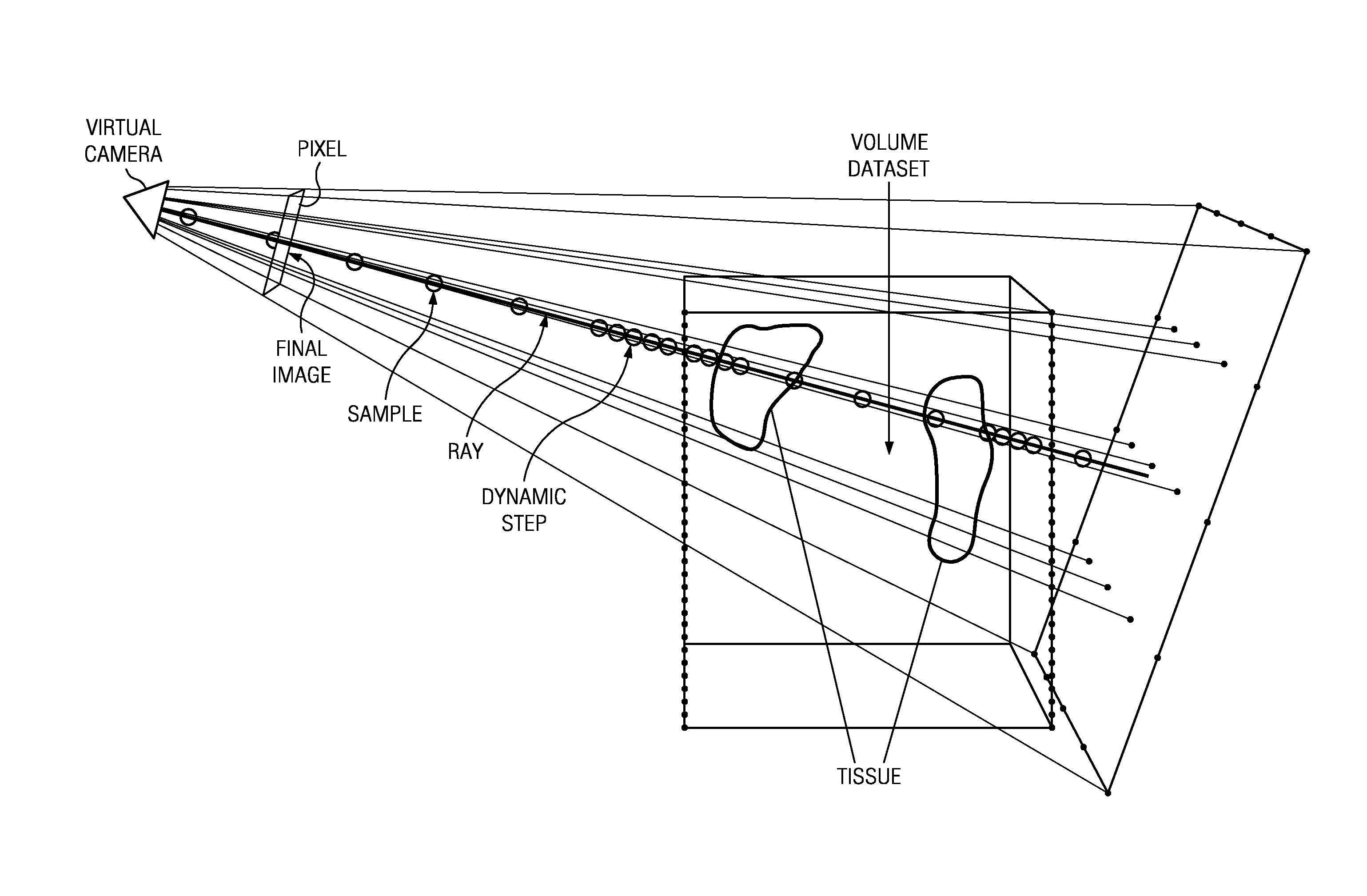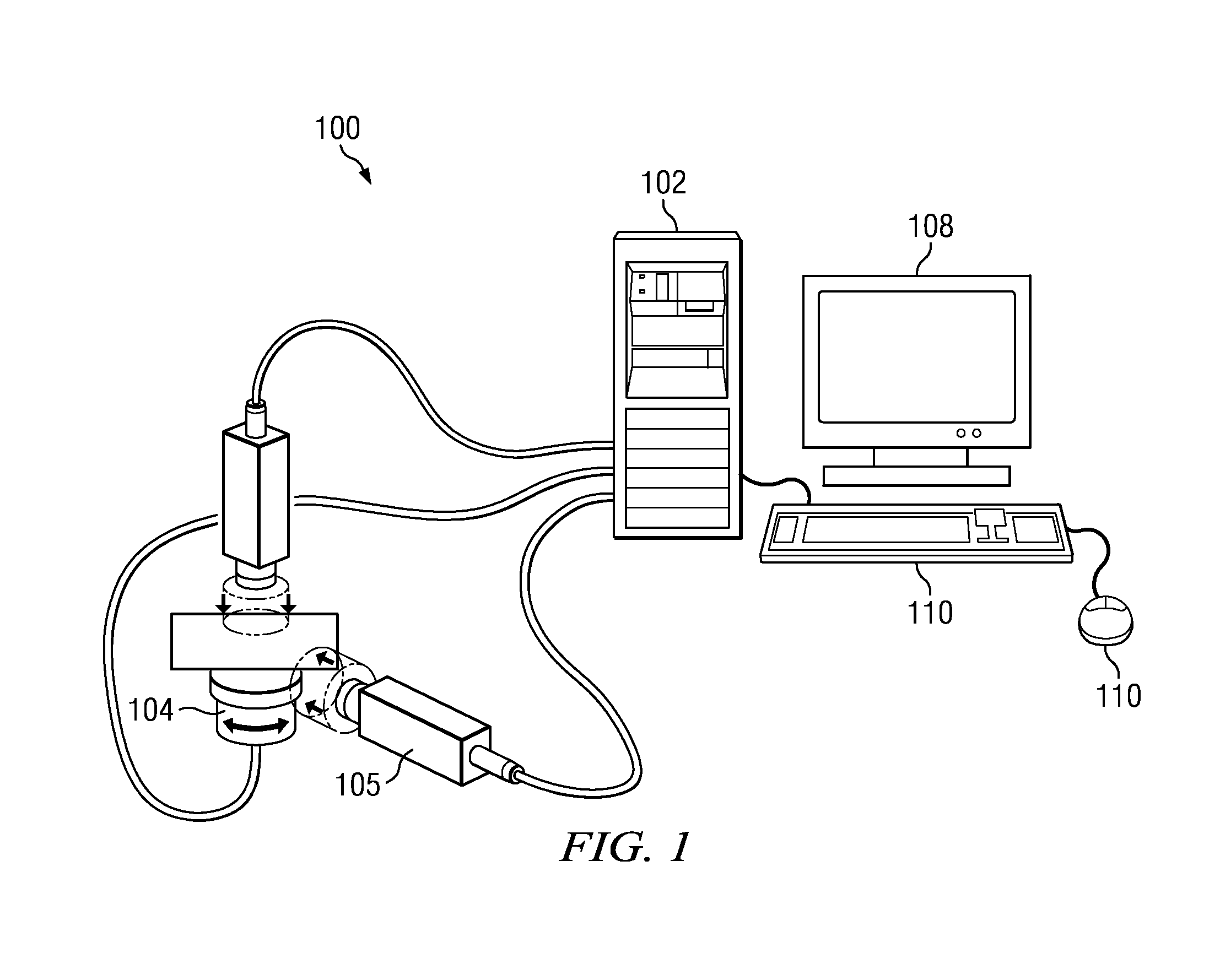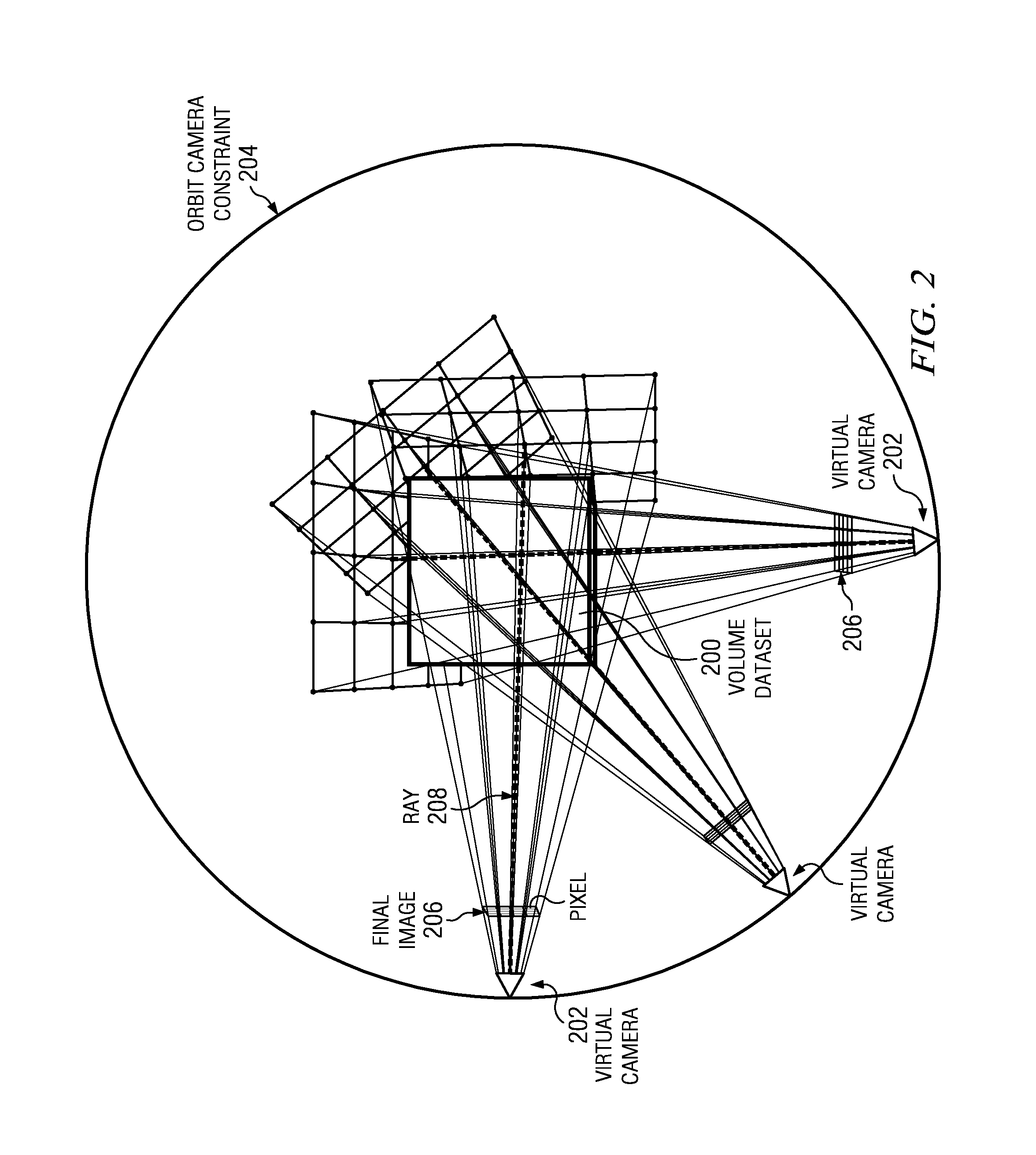Spatial derivative-based ray tracing for volume rendering
a volume rendering and derivative technology, applied in the field of medical imaging, can solve the problems of limited 3d visualization, and limited applicability of orbit and zoom approach for rendering and viewing volume medical datasets
- Summary
- Abstract
- Description
- Claims
- Application Information
AI Technical Summary
Benefits of technology
Problems solved by technology
Method used
Image
Examples
Embodiment Construction
[0022]As illustrated in FIG. 1, a system 100 in which the subject matter herein is implemented comprises a computer system 102 having a display monitor 108, and one or more input devices 110 such as a keyboard, a pointing device, or the lie. The computer system 102 is illustrated as a desktop workstation, but this is not a limitation, as the system may be implemented in a laptop or notebook computer, a wireless computing device (such as an iPad), or any other computing machine that includes a display. The techniques of this disclosure are not limited to any particular type of computing device, system or architecture, and one or more of the elements of the machine may be located in different locations. Thus, for example, the display monitor may be positioned remotely from other components. For convenience of illustration only, the computer system 102 is shown as receiving inputs from a pair of imaging devices 106 that are associated with a support 104. The support 104 rotates or reci...
PUM
 Login to View More
Login to View More Abstract
Description
Claims
Application Information
 Login to View More
Login to View More - R&D
- Intellectual Property
- Life Sciences
- Materials
- Tech Scout
- Unparalleled Data Quality
- Higher Quality Content
- 60% Fewer Hallucinations
Browse by: Latest US Patents, China's latest patents, Technical Efficacy Thesaurus, Application Domain, Technology Topic, Popular Technical Reports.
© 2025 PatSnap. All rights reserved.Legal|Privacy policy|Modern Slavery Act Transparency Statement|Sitemap|About US| Contact US: help@patsnap.com



